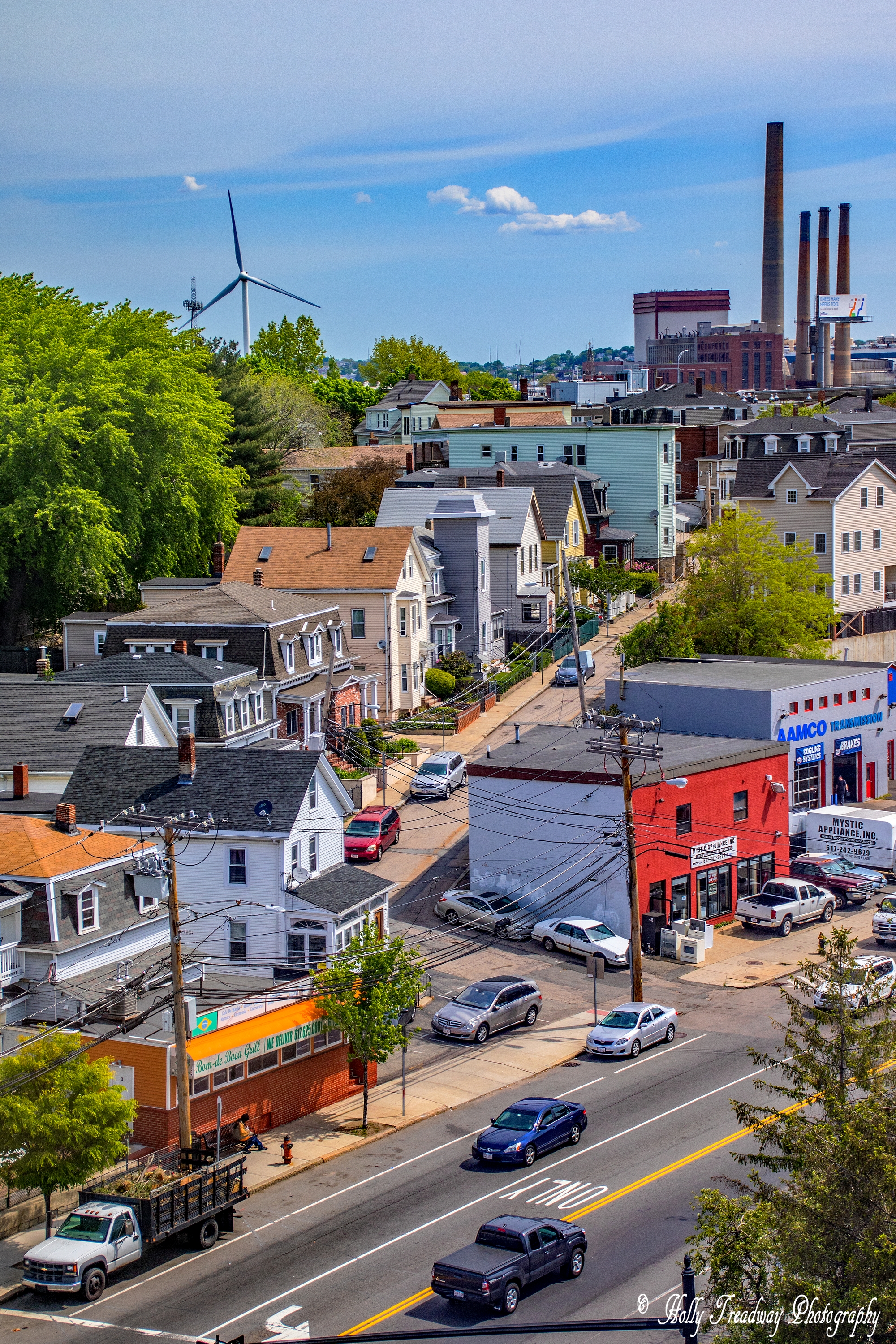


Laid out as early as the mid-1630s, the earliest highway in Somerville was probably what is now Washington Street, and led from present-day Sullivan Square to Harvard Square. In a short time, the settlers began laying out roads in all directions in search of more land for planting and trade with various Native American tribes in the area. Each successive owner of Ten Hills Farm would depend upon slavery's profits until the 1780s, when Massachusetts abolished the practice. New research has found that less than a decade after John Winthrop moved to the farm in 1631, there were enslaved Native American prisoners of war on the property.

The " Ten Hills" neighborhood, located in the northeastern part of the city, has retained the name for over 300 years. It is seen as a precursor to the United States Navy. Built for trading purposes in the early 1630s, it was soon armed for use as a patrol boat for the New England coast. It is also where he launched the first ship in Massachusetts, the " Blessing of the Bay". Winthrop lived, planted, and raised cattle on the farm. Named for the ten small knolls located on the property, Ten Hills Farm extended from the Cradock Bridge in present-day Medford Square to Convent Hill in East Somerville. John Winthrop, the first colonial governor of the Massachusetts Bay Colony, was granted 600 acres (240 hectares) of land in the area in 1631. It was once known as the "Stinted Pasture" or "Cow Commons", as early settlers of Charlestown had the right to pasture a certain number of cows in the area. Otherwise, the area was mostly used as grazing and farmland. The population continued to slowly increase, and by 1775 there were about 500 inhabitants scattered across the area. In 1639 colonists officially acquired the land in what is now Somerville from the Squaw Sachem of Mistick. Others soon followed Woolrich, locating in the vicinity of present-day Union Square. The first European settler in Somerville of whom there is any record was John Woolrich, an Indian trader who came from the Charlestown Peninsula in 1630, and settled near what is now Dane Street. From that time until 1842, the area of present-day Somerville was referred to as "beyond the Neck" in reference to the thin spit of land, the Charlestown Neck, that connected it to the Charlestown Peninsula. The area of earliest settlement was based at City Square on the peninsula, though the territory of Charlestown officially included all of what is now Somerville, as well as Medford, Everett, Malden, Stoneham, Melrose, Woburn, Burlington, and parts of Arlington and Cambridge. Graves was attracted to the narrow Mishawum Peninsula between the Charles and Mystic rivers, linked to the mainland at the present-day Sullivan Square. In 1629, English surveyor Thomas Graves led a scouting party of 100 Puritans from the settlement of Salem to prepare the site for the Great Migration of Puritans from England. The territory now comprising the city of Somerville was first settled by Europeans in 1629 as part of Charlestown. See also: Timeline of Somerville, Massachusetts Early settlement


 0 kommentar(er)
0 kommentar(er)
